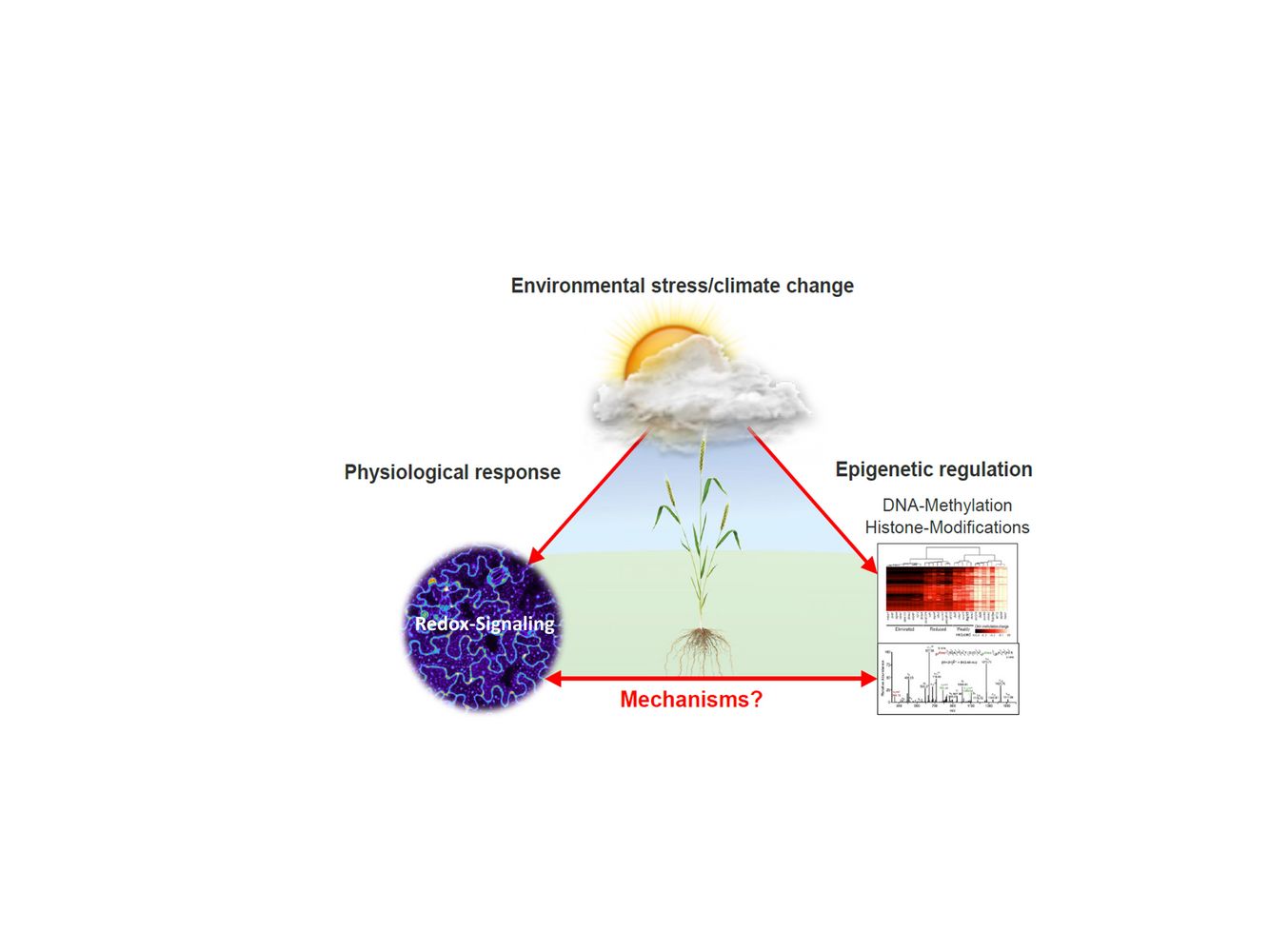Project description
Global temperatures and harmful atmospheric gases will continue to rise in the decades to come and adversely affect plant physiology, e.g. photosynthesis. The photosynthesis can be termed as the most important physiological process as it enables the conversion of light energy of the sun to chemical energy in the form of carbohydrates, the basis for life on earth. To cope with the stressful environmental conditions and to maintain effective photosynthesis, plants are inducing stress-response mechanisms, including initiation of redox signaling, epigenetic processes (e.g. histone modifications and DNA-methylation) and transcriptional reprogramming. Despite the recognized importance of cellular redox-mechanisms, the identity and function of the nuclear redox signaling that is associated with epigenetic processes and stress tolerance mechanisms remains largely obscure.
Moreover, most environmental stress studies in plants have probed only a few climate parameters in isolation. Insights from these studies are difficult to extrapolate to realistic climate conditions. This project aims to address these limitations. We will simulate not only single stress conditions, such as enhanced temperature, drought, ozone or CO2, but also a combination of these conditions. Such a complex and more realistic climate scenario will represent anticipated future parameters. We will grow large number of A. Thaliana wild type plants and plants with impaired redox homeostasis (gsnor-ko) under these conditions. The simulation of future climate conditions will be based on real data of the German Weather Service.
Our Experimental set up promises to advance our basic understanding of how plant nuclear redox-signaling is functioning in response to changing climate conditions, how the plant epigenome responds to such different climate conditions, how this response affects the plant performance (photosynthesis) and if the redox system in general is a key player at the interface between environment and plant epigenome and phenotypes.
In detail, we want to identify redox-regulated chromatin modifiers and analyze, at which genomic regions significant stress-related changes in DNA methylation and histone modifications occur and how these changes affect gene expression in order to adapt plants performance (photosynthesis) to future climate conditions. In sum, the complex environmental conditions will allow a more realistic insight into plants' response to climate change and how redox-mechanisms coordinate epigenetic processes and transcriptional reprogramming under these conditions.

Relevant literature
- Ageeva-Kieferle A., Georgii E., Winkler B., Ghirardo A., Albert A., Hüther P., Mengel A., Becker B., Schnitzler J.-P., Durner J., Lindermayr C. (2021). Nitric oxide coordinates growth/development and stress response via histone modification and gene expression. Plant physiology, doi: 10.1093/plphys/kiab222.
- Lindermayr C., Rudolf E. E., Durner J. and Groth M. (2020). Interactions between metabolism and chromatin in plant models. Molecular Metabolism, Vol 38, doi:10.1016/j.molmet.2020.01.015
- Mengel A., Ageeva A., Georgii E., Bernhardt J., Wu L., Durner J., Lindermayr C. (2017). Nitric oxide modulates histone acetylation at stress genes by inhibition of histone deacetylases. Plant Physiology, 173(2), 1434-1452
- Izabella K., Durner J., Lindermayr C. (2015). Crosstalk between nitric oxide and glutathione is required for NONEXPRESSOR OF PATHOGENESIS-RELATED GENES 1 (NPR1)-dependent defense signaling in Arabidopsis thaliana. New phytologist, doi: 101111/nph.13502.
- Lindermayr C., Sell S., Müller B., Leister D., Durner J. (2010). Redox control of the NPR1-TGA1 system of Arabidopsis thaliana by Nitric Oxide. The Plant Cell, 22, 2894-2907
